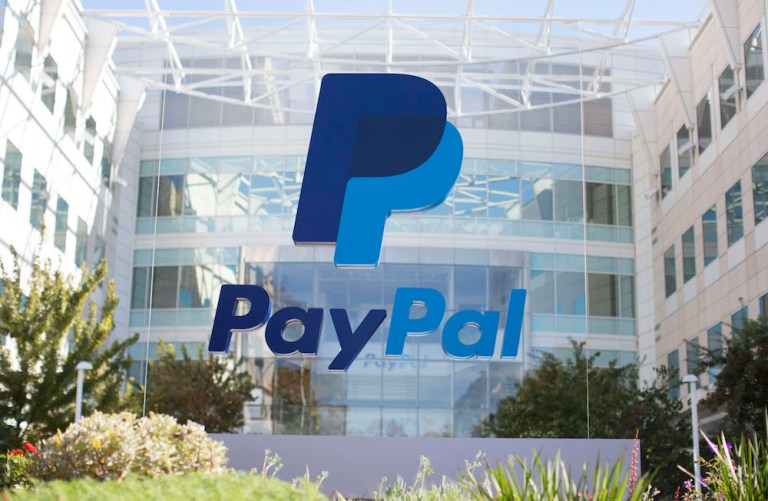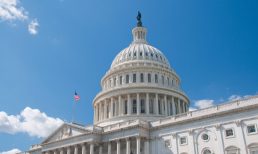Because, as Karen Webster noted in a recent chat with Jim Magats, PayPal’s head of core global payments, the world was a very different place 24 months ago when it came to the industry’s perception of PayPal’s relationship with issuing banks, and even the card networks.
“Then,” Webster noted, “the [card] networks and banks were much more likely to perceive you to be a competitor and not a collaborator.”
Magats agreed, noting that for Chase – the largest card issuer in the U.S. – driving more of its customers to PayPal probably wasn’t at the top of their strategic initiatives list.
But a lot can change in two years.
“We’ve oriented ourselves to show our potential partners the power of our two-sided network,” Magats explained, “and how it can give their customers the opportunity to shop at more [online] locations using their card in a much easier manner than they’ve historically been able to.”
And that, he said, can drive more transactions on their cards – as the card that tops their customer’s digital wallet.
It also means, Magats said, that in the era of digital payments, the future is about collaboration, and being a good collaborator – illustrated by PayPal’s partnerships with Visa, Mastercard, Wells Fargo, Citibank and Chase, to name just a few, over the past 18 months.
This week (March 13), it was announced that one of those collaborations announced last summer, PayPal’s tie-in with Chase, will be expanded and taken to a deeper level.
Advertisement: Scroll to Continue
Starting in Q2 of 2018, PayPal will be featured as one of Chase’s quarterly rewards categories for Freedom cardholders (the other two being grocery and Chase Pay). The newest rewards program iteration will see Chase Freedom cardholders securing 5 percent cash back for up to $1,500 in combined purchases when they use their Chase Freedom Card via their PayPal wallet.
“We see this as a great opportunity for Chase to unlock the value of its customers using PayPal – particularly with the high mobile and online conversion rates we see through One Touch and our risk management platform,” said Magats.
PayPal is the most widely accepted digital wallet acceptance mark online, with One Touch accepted at 75 percent of the web’s top 100 retailers. According to the PYMNTS Buy Button report on over 1,000 popular web merchants, PayPal’s little blue icon appears nearly 69 percent of the time. The #2 spot, by comparison, is held by Amazon, with 10 percent penetration.
That means, increasingly, if consumers are shopping online, they are very often shopping with PayPal.
And given the meteoric expansion of digital commerce in recent years, Chase has every reason not just to want to be in that PayPal wallet, but at the top of it when customers are going to checkout using PayPal.
Beyond “Blocking and Tackling” to the Power Of Choice
The early phases of the Chase partnership – and, really, most tie-ins between firms that operate at such a massive scale as PayPal and Chase, Magats said – is a lot about “getting the basics right.” Basics that consumers now expect from their digital payments experience.
Tokens, instant withdrawals, ensuring that cards don’t “go stale” in the wallet – those are just a few of the “blocking and tackling” issues that Magats noted are the foundation upon which other value-added features can be layered. It’s what, he said, now allows Chase and PayPal to support one another and their mutual goals in a number of ways.
That starts with giving consumers choices, without asking them to give up something else they want.
Magats noted that when it comes to payments, consumers already have lots of choices: debit cards, credit cards, mobile wallets and ACH transfers. What they lack is the ability to move between those choices in a single digital wallet that extends that choice, on a merchant-by-merchant, case-by-case basis, without losing the attendant benefits of using those payment methods – rewards, loyalty memberships or any other added value that issuers may wish to offer their cardholders.
The goal – and what the Chase partnership allows PayPal to do for their customers – is to allow them to make their preferred choices when it comes to managing how they pay for their purchases.
“We find that the more options we expose and make possible for customers to use, the more we provide a platform that allows our issuing partners to co-market with us, and the better able we are to deliver more value to the consumer,” Magats said.
And, he noted, the better able they’ll be to deliver the value the consumer really wants. Some PayPal users will never change their top-of-wallet card, no matter how many they have in there. Some, on the other hand, are constant “togglers” and align spend and payment methods with what works for them, sometimes even on a transaction-by-transaction basis.
“What we have seen, and what has been a surprising outcome for us, has been the importance of flexibility in payments and the amount of fluidity we can offer between the various instruments we let customers use,” Magats remarked. “What we have found is that the more things we let people have in their wallets, the more they actually use them, because they can be more customized to [their] exact needs.”
That means PayPal, he noted, will be looking to place rewards points as another tender method storable in the wallet “likely by the back half of this year” to better round out that fluid offering.
What’s Next
Though Magats noted it is almost a cliché to say it at this point, when looking at the future of payments, one is almost forced to use the “omnichannel” buzzword.
Customers, of course, probably don’t think about omnichannel shopping, likely never use the term and would be completely astonished to find out that they are participating in it right now. Most of them don’t omnichannel shop, or multichannel shop, Magats noted as the conversation wound down.
They simply shop – and have their own expectations for what that should look like when they do it.
“It’s the next frontier – granted, one we have been talking about for years, but one that is clearly closer to being enabled for our customers and our merchant and issuer partners,” said Magats.
And that means there is work to be done. Bringing the rewards points into the PayPal wallet is one facet to be completed by the end of this year. Then, he noted, the goal is to store cards and store rewards programs – because those offerings and interactions are key to the loyalty relationship that brands have with their best customers. PayPal, Magats noted, can play a key role in better enabling digital interactions there.
After all, smoother, faster multichannel commerce is in everyone’s interest in the ecosystem, which is why it’s next on the list to build.
As Magats pointed out, the commerce world is clearly developing toward giving the customer the choice to pay with whatever they want, whenever they want. PayPal sees its job as making that happen, in collaboration with its partners.
“Who would have thought two years ago that the largest issuer in the U.S. would be prompting people to use PayPal – and doing it by putting a 5 percent cash back reward behind it? But that is now the value they see in what we can offer to them and their customers,” Magats remarked.




